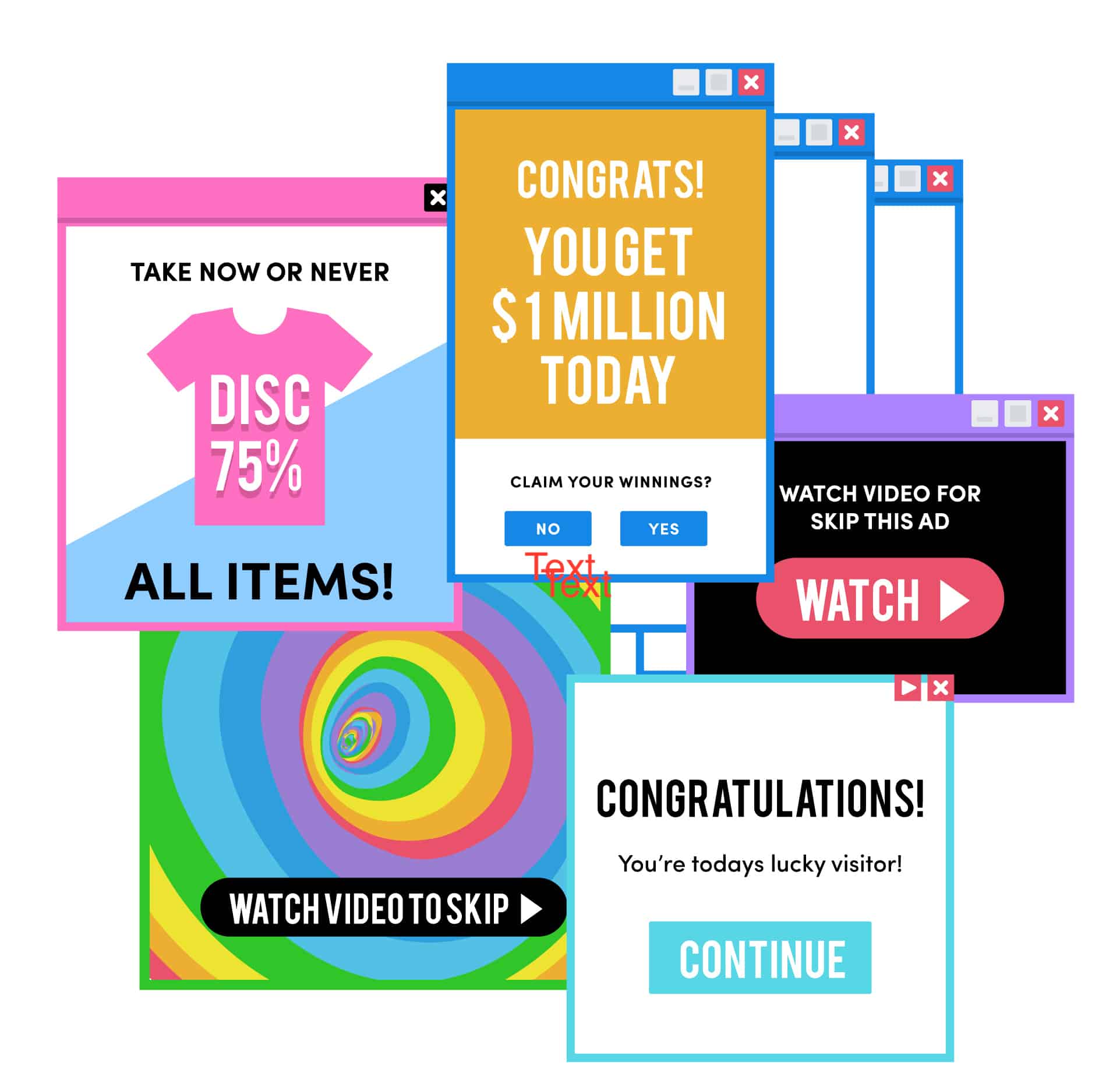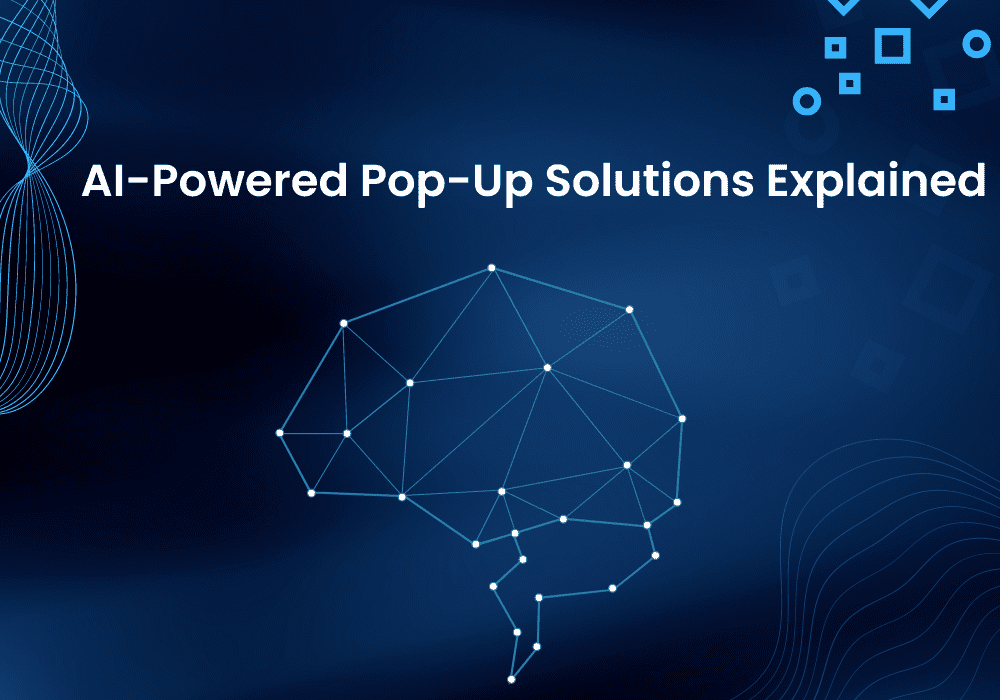Ever met website pop-ups that either annoyed you badly or helped you at the right moment? If your answer is yes, or even if you don’t know what website pop-ups are, you should look at this article to learn more about website pop-ups and AI’s role in creating great ones.
What are Website Pop-ups?
As the word suggests, website pop-ups are bubbles that “pop up” on your screen thanks to the simple JavaScript code. Pop-ups are designed to attract visitor’s attention and increase engagement and conversion rates. Most of the pop-ups are clickable and intend to make you take action.
What makes a great pop-up?
- It is triggered at the right time and place
- Effectively communicates your message
- Has a clear CTA that guides visitors and increases conversion rates
- Offers valuable content such as discounts and special offers
- Has “X,” “Close,” or “Cancel” buttons to close the pop-up

If you want to make your pop-up better, you should know that users are more likely to engage with pop-ups that are not annoying and invasive. Instead of overwhelming them with the same pop-up every time, consider targeting visitors with different messages and pop-up types. Showing the same pop-up to a wider audience is not a clever step in pop-up marketing, so using new methods is a must.
AI in Pop-up Creation
It shouldn’t be surprising that AI has infiltrated the realm of website creation, improving efficiency and higher conversion rates. There are various AI writing tools, image generation tools, and pop-up creation solutions, of course. Tools such as Octane AI, AiTrillion, Popupsmart, and more, are used in optimized and personalized pop-up creation. The automatic generation of the pop-ups is preferable as it offers relevant pop-ups at the right time and place. But what’s the logic behind AI-powered Pop-up tools? Well, using machine learning algorithms and data analysis, these tools can observe and analyze users’ behavior, including their:
-
Behavioral patterns
For example, how visitors interact with the website, including their actions, preferences, and habits
-
Browsing history
A record showing the websites and pages the user has visited, the amount of time they spend on each page, etc
-
Demographics
Information about the users’ age, gender, location, and other statistical characteristics
Features AI-powered Pop-up Offers

Personalized Pop-up Advertisements
Robust AI algorithms can make decisions by analyzing large amounts of data. Due to evaluating the users’ behavioral patterns and demographics, AI-powered pop-up solutions deliver ads customized to each visitor’s interests and needs. Targeting the specific behavior of the visitors is a piece of cake for AI algorithms. For example, the algorithms can offer an ad for a related item if the visitor shows interest in a particular product or service. This not only ensures effective and personalized pop-ups for each individual but also ensures better outcomes from the pop-up campaigns.
Create Contextually Relevant Pop-ups
Companies can use AI to generate contextually relevant pop-ups that change depending on the website’s content or context. Computer Vision and Natural Language Processing techniques (NLP) can be used to understand the context and meaning of the content on a website and therefore offer relevant pop-ups related to the topic discussed. Besides this, AI-powered pop-up tools undergo changes to adjust to the updates of the website’s content and visitors’ behavior.
Dynamic Pop-up Generation
Another powerful advantage of AI pop-up tools over manual pop-up creation is that it offers dynamic pop-up generation based on real-time data. Real-time data can include weather, time of day, and calendar events, which tools take into consideration before offering pop-ups. For example, if it’s raining, pop-ups may advertise rain boots or umbrellas. If you visit the website during the morning, it may offer you pop-up ads for coffee or alcohol for Friday night evenings. Upcoming holidays and events are also taken into consideration before displaying the pop-up.
Ethical Considerations of AI Pop-up Marketing
It’s also critical to consider the ethical aspect and ensure that AI in Pop-up marketing is used responsibly and effectively. However revolutionary these tools may seem, there is still a potential risk of privacy violations and frustrating users.
User Privacy
We already discussed that AI algorithms track visitors’ behavioral patterns and collect their data for future optimization. Here is when companies should obtain an agreement for collecting their data and guarantee that it’ll be used for only marketing purposes
User Experience
If the pop-ups are irrelevant to the visitors’ interests and there is no control over what they receive, the user experience will suffer greatly. Put yourself in the shoes of users, and avoid pop-ups that may bother and overwhelm them
Accuracy
In the digital world full of fake information, accuracy should be a priority. The data that the algorithms generate should be double-checked and free of biases. Misleading and giving users false information is out of ethical and moral boundaries.
Final Thoughts
To put it shortly, website pop-ups are windows on your screen that lead you to a specific landing page. Having relevant timing, a clear message and user-friendly pop-ups are the ones that most visitors engage with the most. The traditional methods of manually creating pop-ups are no longer applicable and don’t adjust to the users’ needs. But AI-powered pop-up tools created new approaches with new solutions. It is evident that AI is one of a kind, and we must walk in tandem with the new developments in this constantly changing world.
AI is used in pop-up creation for better-optimized ads, targeting, increased engagement, and conversion rates. The AI algorithms track the users’ past behavior and demographics and, based on the data analysis, offer them pop-ups they most likely will be interested in. This creates a space to offer more personalized pop-ups for every visitor, improving their satisfaction and engagement. Constantly changing and undergoing updates is the basis of AI-based tools, so productivity is ensured. One thing that remains for companies to do is to address ethical questions and ensure users’ data is safe, they get correct information, and they are not annoyed with irrelevant pop-ups.

